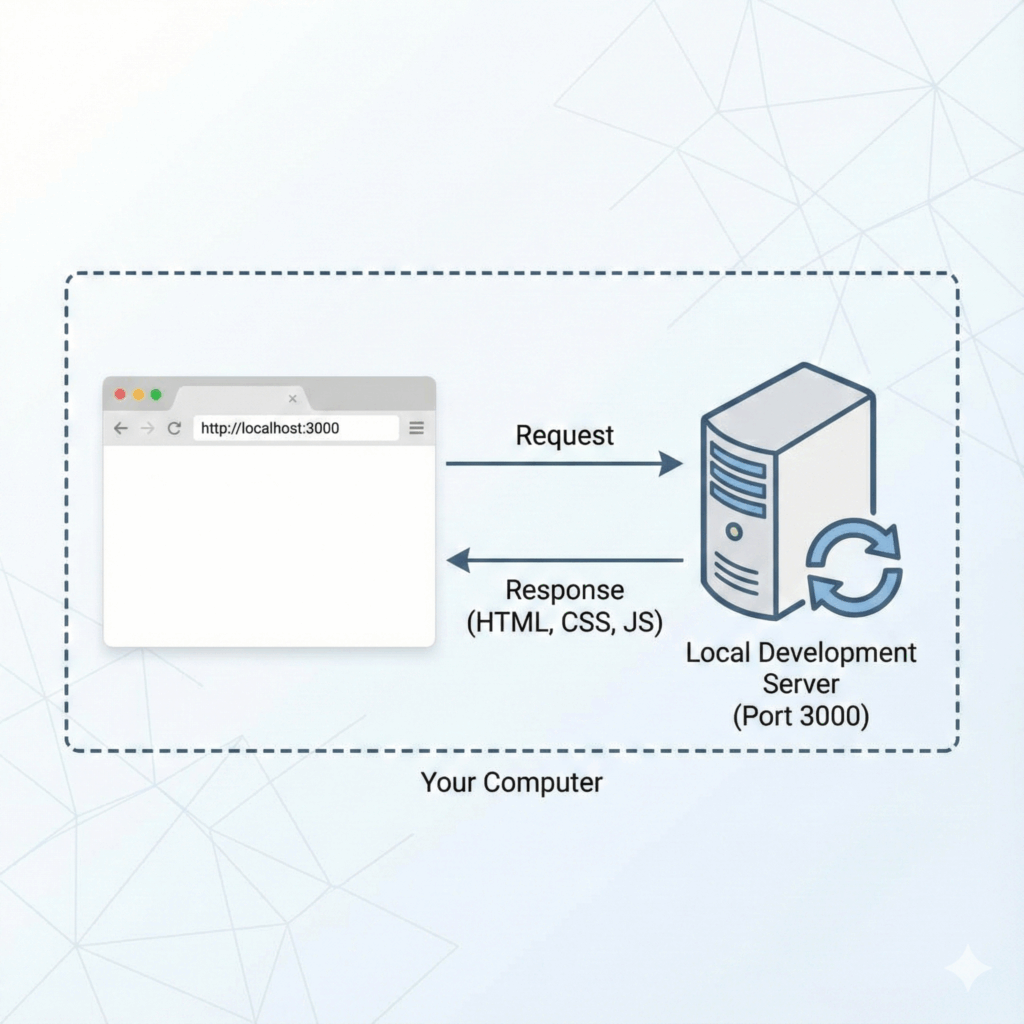Chrome flags are experimental features that allow you to enhance and customize your browsing experience. They play a significant role in web development by enabling specific functionalities that are not yet part of the standard browser settings. One such functionality is the ability to bypass SSL validation for local testing environments.
Localhost is an essential element in testing and developing web applications. It serves as a personal server where you can run applications locally before deploying them to a live environment. This setup helps developers identify and resolve issues without affecting live users.
HTTPS and SSL certificates are crucial for securing connections between clients and servers. HTTPS ensures that data transmitted is encrypted, while SSL certificates authenticate the server’s identity. However, setting up valid SSL certificates for localhost can be challenging, leading many developers to rely on tools like Chrome flags to simplify the process.
Understanding Chrome Flags
Chrome flags are experimental features and settings in the Google Chrome browser that allow you to unlock advanced functionalities. These flags can enhance your browsing experience by enabling capabilities that are not yet part of the standard Chrome release.
Purpose of Chrome Flags
- Enhance Browser Functionality: Chrome flags provide a way to test and use upcoming features before they are officially released.
- Customization: They allow users to customize their browser experience according to their needs, such as improving performance or adding new tools for developers.
- Experimental Features: Developers can experiment with new features without waiting for official updates, offering a playground for innovation and testing.
Focusing on the ‘allow-insecure-localhost’ Flag
The ‘allow-insecure-localhost’ flag was specifically designed for web developers. Its primary use case was enabling HTTPS requests to localhost with invalid SSL certificates. This functionality is crucial for testing web applications locally using HTTPS without the need to set up valid certificates.
Use Cases:
- Local Development: Facilitates the development of applications that require HTTPS connections by bypassing SSL validation.
- Self-Signed Certificates: Allows developers to use self-signed certificates during local testing, which simplifies the setup process.
- Cross-Platform Compatibility: Supported across various operating systems like Mac, Windows, Linux, Chrome OS, and Android.
By utilizing this flag, developers could streamline their workflows and focus on building secure web applications without dealing with certificate validation issues during local testing.
The Role of the ‘allow-insecure-localhost’ Flag
The ‘allow-insecure-localhost’ flag played a crucial role in simplifying local development with HTTPS. It allowed developers to bypass SSL validation when working with localhost, making it easier to test web applications without dealing with invalid certificate errors. This flag was particularly beneficial for those using self-signed certificates, which are commonly used in development environments but are not trusted by default.
Functionality
- Bypassing SSL Validation: With ‘allow-insecure-localhost’ enabled, Chrome would ignore SSL certificate errors for localhost connections. This meant that developers could use HTTPS without the need to obtain a valid SSL certificate, streamlining the testing process.
- Local Testing: The flag facilitated testing of secure connections on local servers, ensuring that features reliant on HTTPS could be properly evaluated before deployment.
Benefits
- Self-Signed Certificates: For web server setups using self-signed certificates, this flag eliminated the hassle of dealing with browser warnings and errors related to untrusted certificates.
- Efficient Development Workflow: By reducing interruptions caused by SSL validation issues, developers could focus more on coding and less on configuration hurdles.
Developers found this flag indispensable for maintaining a seamless development experience while adhering to modern security protocols like HTTPS.
The Removal of the Flag and Its Impact on Developers
Chrome version 119 marked a significant shift in browser security policies with the removal of the allow-insecure-localhost flag. This change left many developers scrambling to adapt their workflows.
Timeline of Availability and Removal
- Introduced in earlier Chrome versions, the
allow-insecure-localhostflag provided a convenient way for developers to bypass SSL validation for localhost testing. - As Chrome version 119 rolled out, users noticed the flag removed from the options, signaling a move towards stricter security standards.
User Feedback and Implications
Feedback from the developer community highlighted several key points:
- Workflow Disruptions: Many developers expressed frustration. Testing applications over HTTPS on localhost without valid certificates became cumbersome.
- Increased Setup Time: The absence of this flag meant additional steps were required to configure local environments with valid SSL certificates.
User forums and developer communities were abuzz with alternative solutions and workarounds. Some suggested enabling the #temporary-unexpire-flags-m118 flag to regain previous functionalities, while others recommended reverting to older Chrome versions.
Removing this flag underscores a broader trend. Browsers are increasingly prioritizing security by enforcing stricter certificate validation protocols. This shift aims to mitigate potential vulnerabilities but presents new challenges for development workflows.
Challenges Faced by Developers After the Flag’s Removal
The removal of the ‘allow-insecure-localhost’ flag presents a significant challenge for developers. Without this flag, testing web applications on a local webserver becomes cumbersome, as HTTPS requests with invalid SSL certificates are blocked by Chrome.
Key Challenges:
- SSL Validation: Developers must now ensure that their local development environments use valid SSL certificates. This often involves setting up self-signed certificates or acquiring trusted ones, which can be time-consuming and complex.
- Workflow Disruptions: The absence of the flag disrupts established workflows. Tasks that were previously straightforward become more complicated, potentially slowing down development and debugging processes.
- Security Risks: Using workarounds or older versions of Chrome to bypass SSL validation poses security risks. Invalid certificates can expose developers to man-in-the-middle attacks and other vulnerabilities.
Importance of Valid Certificates
Valid SSL certificates are crucial for maintaining secure connections in local development environments. They help:
- Prevent Security Breaches: Ensuring encrypted communication between the browser and the local webserver safeguards against potential attacks.
- Maintain Best Practices: Adhering to industry standards for secure connections promotes better security hygiene and prepares applications for production environments where valid SSL certificates are mandatory.
Addressing these challenges requires a shift towards using valid certificates and adopting new practices to maintain efficient and secure web development workflows.
Exploring Alternatives to the Removed Flag
With the removal of the ‘allow-insecure-localhost’ flag, developers have sought various workarounds to regain its functionalities. One notable solution is enabling the temporary-unexpire-flags-m118 flag. This flag allows users to access certain features that were available in Chrome version 118, providing a temporary respite for those affected by the recent update.
In addition to this, some developers opt to download an older version of Chrome where the ‘allow-insecure-localhost’ flag is still accessible. While this can restore previous functionalities, it carries risks related to using outdated software, such as potential security vulnerabilities and incompatibility issues with newer web technologies.
Alternative Workarounds:
- Enabling the #temporary-unexpire-flags-m118 Flag: plaintext chrome://flags/#temporary-unexpire-flags-m118
- Using Older Versions of Chrome:
- Downloading from archives or third-party sites (with caution).
These alternatives provide immediate solutions but emphasize the broader need for valid SSL certificates in local development environments.
Configuring HTTPS for Local Development With Valid SSL Certificates
Setting up a local web server with HTTPS involves several steps that ensure your development environment mimics a production environment. This process can be crucial for testing and debugging web applications effectively.
Steps to Set Up a Local Web Server with Valid SSL Certificates
- Generate a Self-Signed Certificate: sh openssl req -x509 -newkey rsa:4096 -keyout key.pem -out cert.pem -days 365
- This command generates a new private key (
key.pem) and a self-signed certificate (cert.pem). - Configure Your Local Web Server:
- For Apache: apache <VirtualHost *:443> DocumentRoot “/path/to/your/app” ServerName localhost SSLEngine on SSLCertificateFile “/path/to/cert.pem” SSLCertificateKeyFile “/path/to/key.pem”
- For Nginx: nginx server { listen 443 ssl; server_name localhost;
ssl_certificate /path/to/cert.pem;
ssl_certificate_key /path/to/key.pem;
location / {
root /path/to/your/app;
index index.html;
}
- }
- Trust the Self-Signed Certificate: Add the generated certificate to your system’s trusted certificates store. This step varies based on the operating system:
- On macOS, drag and drop
cert.peminto the Keychain Access application and set it to “Always Trust”. - On Windows, import the certificate into the “Trusted Root Certification Authorities” store using the Certificates snap-in.
- On Linux, copy
cert.pemto/usr/local/share/ca-certificates/and runsudo update-ca-certificates.
- Restart Your Web Server: Ensure changes are applied by restarting your web server.
Using valid SSL certificates, even self-signed ones, can significantly enhance your local development setup by ensuring HTTPS connections are properly tested.
Evaluating Risks and Best Practices for Secure Local Development Connections
Understanding Localhost Security Risks
Using invalid certificates on localhost connections opens up multiple security risks. Invalid certificates can lead to:
- Man-in-the-Middle (MitM) Attacks: Attackers could intercept traffic between your local server and browser, potentially accessing sensitive data.
- False Sense of Security: Developers might overlook the potential risks, assuming that local connections are always safe.
Potential Threats
Several threats arise when dealing with insecure localhost connections:
- DNS SpoofingAttackers can manipulate DNS responses, redirecting traffic intended for a legitimate site to a malicious one.
- This could lead to unauthorized access or data breaches during development.
- Compromised DNS ServersMalicious actors might compromise DNS servers, leading to improper routing of local traffic.
- This can result in exposure to harmful sites or unintended data leaks.
Best Practices for Mitigating Risks
To enhance the security of your localhost connections:
- Use Valid SSL Certificates: Obtain trusted certificates even for local development environments.
- Regularly Update Software: Keep browsers and development tools up-to-date to benefit from the latest security patches.
- Implement Proper Network Security Measures: Use firewalls and secure networks to protect against external threats.
Understanding these risks and adopting best practices ensures a more secure development environment.
Conclusion: Best Practices for Securing Localhost Connections in Web Development
Ensuring secure connections during local development is crucial. Prioritizing trusted certificates over self-signed ones mitigates risks associated with invalid certificates. Employ tools like Let’s Encrypt for free, automated, and open certificate authority services or consider using development tools that simplify the process of generating valid SSL certificates.
Key recommendations include:
- Utilize trusted SSL certificates whenever possible.
- Regularly update your browser and development tools.
- Stay informed about changes in Chrome flags and security policies.
Following these practices enhances security and aligns with modern web development standards.





